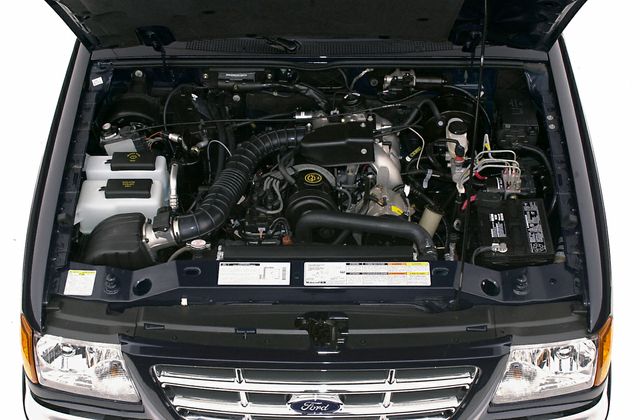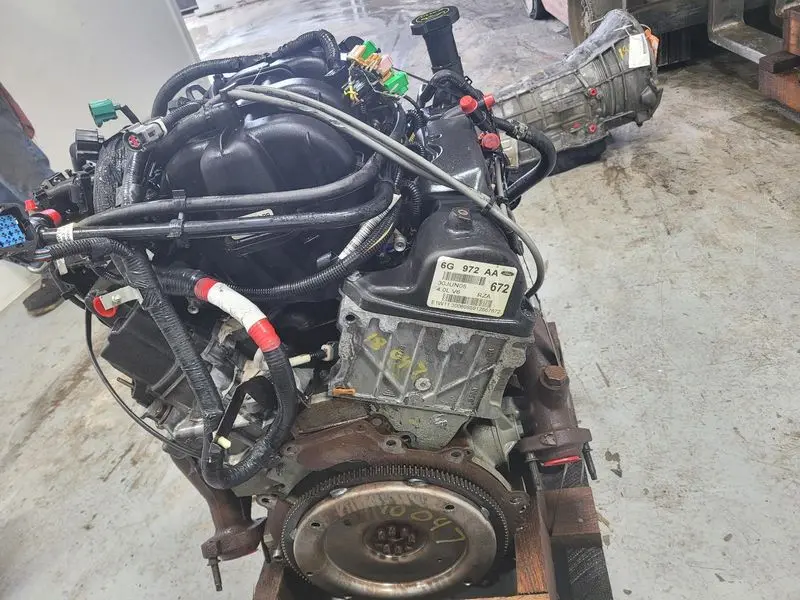Everything You Need to Know About the 2.2 Ford Ranger Engine and Its Performance
Everything You Need to Know About the 2.2 Ford Ranger Engine and Its Performance
Blog Article
Comprehending the Basics of Cars And Truck Engines: Functions, types, and features

Summary of Car Engines
A car engine serves as the heart of a lorry, transforming fuel right into mechanical energy to move it ahead. This detailed system consists of numerous elements that operate in unison to make certain optimum performance and effectiveness. The fundamental procedure of a vehicle engine includes the inner combustion procedure, in which fuel and air are blended, sparked, and expelled to produce power.
The engine's layout can substantially influence its performance, fuel effectiveness, and discharges. Trick components include the cyndrical tube block, pistons, crankshaft, and camshaft, each playing a crucial role in the engine's general function. The cylinder block houses the cyndrical tubes where burning takes place, while the pistons convert the explosive energy from combustion right into linear movement. This activity is after that transformed right into rotational energy by the crankshaft, enabling the car's wheels to transform.
In enhancement to these parts, engines typically make use of different systems such as fuel injection, ignition, and cooling systems to enhance performance and longevity. Understanding the standard technicians of vehicle engines is vital for identifying problems and carrying out upkeep, inevitably adding to the automobile's dependability and effectiveness over time.

Types of Automobile Engines
Automobile engines can be categorized into several types based upon their layout, fuel type, and functional concepts. 2.2 ford ranger engine. The most common groups consist of interior combustion engines (ICE), electrical engines, and hybrid engines
Internal burning engines, which can be additional split into gasoline and diesel motor, run by sparking a fuel-air mix to produce power. Gasoline engines are typically lighter and smoother, while diesel motor are a lot more fuel-efficient and offer better torque.
Electric engines use electric power stored in batteries to power an electrical motor, supplying instant torque and absolutely no discharges during procedure. As technology breakthroughs, electrical vehicles (EVs) are significantly ending up being preferred for their ecological benefits and lower running costs.
Hybrid engines integrate components of both interior combustion and electrical engines, enabling versatile source of power and enhanced fuel efficiency. They can run in various settings, utilizing either the gas engine, the electrical motor, or both all at once.
Each type of engine has distinct benefits and negative aspects, affecting their application in different car kinds and market segments, from small automobiles to sturdy trucks. Comprehending these kinds is important for making notified choices concerning automobile selection and performance expectations.
Engine Features Clarified
Comprehending engine features is crucial for understanding exactly how lorries operate efficiently. At the core of any type of interior burning engine exists the fundamental process of converting fuel into power. This procedure starts with the consumption stroke, where air and fuel are drawn into the combustion chamber. Following this, the compression stroke compresses the air-fuel mix, boosting its temperature level and stress.
The ignition takes place next, igniting the combination view it and developing a quick growth of gases. This force drives the piston down throughout the power stroke, which inevitably converts right into the rotational activity of the crankshaft. The exhaust stroke after that gets rid of the spent gases from the chamber, making method for a new cycle to commence.
Along with these key features, engines likewise integrate systems that manage cooling and lubrication, ensuring optimum functional temperatures and decreasing friction in between relocating parts. This detailed interaction of features enables the engine to generate the power required for automobile propulsion while keeping effectiveness and reliability. Understanding these features supplies important understanding into the intricacies of automotive design and improves the ability to identify and deal with engine-related concerns efficiently.
Key Engine Attributes
Engine style encompasses numerous essential attributes that dramatically influence resilience, efficiency, and efficiency. One of one of the most vital facets is the engine configuration, which consists of inline, V-type, and flat styles. Each arrangement impacts the engine's equilibrium, dimension, and power result, thus affecting total vehicle dynamics.
One more crucial feature is the engine displacement, describing the complete quantity of all cylinders. Larger displacements commonly yield more power however might endanger fuel efficiency. Engine materials likewise play a critical duty; high-strength and light-weight products, such as light weight aluminum and magnesium alloys, boost efficiency without including too much weight.
The sort of fuel injection system employed-- such as direct or multi-port injection-- affects combustion efficiency and discharges. Turbocharging and turbo charging are attributes that boost engine efficiency by forcing additional air right into the burning chamber, raising power result without significantly increasing engine dimension.
Last but not least, the visibility of innovative engine administration systems enhances fuel-air blend and ignition timing, contributing to smoother operation and better fuel economy. Collectively, these features define an engine's capacities, setting the foundation for its performance and longevity in an affordable vehicle landscape.
Upkeep Tips for Engines
Proper engine upkeep is critical for making Extra resources sure optimum performance and longevity, as neglecting regular treatment can bring about considerable issues down the line. To keep your engine effectively, start with regular oil adjustments, typically every 3,000 to 7,500 miles, depending on the kind of oil utilized. Fresh oil lubricates engine parts, minimizing friction and look at this site wear.
In addition, keeping an eye on coolant levels is vital to avoid getting too hot. Guarantee that the coolant is covered up and is in excellent condition to maintain efficient temperature level regulation. Routinely change and inspect air and fuel filters, as blocked filters can impede air flow and gas shipment, compromising engine effectiveness.
Moreover, take notice of ignition system and ignition systems. Worn or faulty ignition system can cause misfiring and decreased efficiency. Checking the battery terminals and connections for deterioration is additionally crucial, as a weak battery can impact engine beginning.

Conclusion
In recap, a comprehensive understanding of cars and truck engines incorporates different types, functions, and crucial functions that significantly influence vehicle performance. Internal combustion engines, along with hybrid and electric alternatives, show varied systems for power conversion. 2.2 ford ranger engine. Acknowledging the necessary features, such as intake and exhaust cycles, together with vital engine functions like configuration and fuel shot systems, outfits car proprietors with the expertise needed for efficient maintenance and operation, inevitably improving vehicle durability and performance
A cars and truck engine offers as the heart of a vehicle, converting fuel right into mechanical power to drive it ahead. The fundamental operation of an auto engine entails the interior burning process, wherein gas and air are blended, ignited, and expelled to produce power.
On a regular basis check and replace air and gas filters, as blocked filters can prevent air flow and fuel distribution, compromising engine performance. - 2.2 ford ranger engine
In summary, a comprehensive understanding of automobile engines encompasses numerous types, features, and essential attributes that considerably affect car efficiency. Acknowledging the important features, such as intake and exhaust cycles, together with crucial engine attributes like configuration and gas shot systems, gears up automobile owners with the understanding essential for effective maintenance and procedure, ultimately improving lorry longevity and efficiency.
Report this page